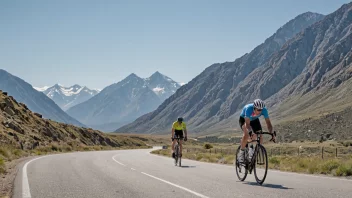Skiing in extreme conditions poses unique challenges, particularly when it comes to visibility and protection from the elements. Whether you're navigating blizzards, icy winds, or glaring sunlight reflecting off the snow, having the right goggles and visors is essential for maintaining safety and enhancing performance on the slopes. This article delves into the various aspects of choosing the best goggles and visors for extreme skiing conditions, examining features such as lens technology, ventilation systems, and fit to help you make informed choices.
Understanding the Importance of Goggles and Visors
Goggles and visors serve several critical functions for skiers, especially in extreme weather. They provide essential protection against UV rays, wind, snow, and debris, ensuring that your eyes remain safe and your vision clear. The right eyewear can significantly impact your performance by improving your ability to see variations in terrain and track obstacles.
Key Features to Consider
Lens Technology
When selecting goggles or visors, lens technology is paramount. Here are some key aspects to consider:
- UV Protection: Look for lenses that offer 100% UV protection to prevent long-term eye damage.
- Anti-Fog Coating: Fog can be a major issue while skiing. Goggles with anti-fog coatings and proper ventilation help reduce moisture buildup.
- Photochromic Lenses: These lenses adapt to changing light conditions, darkening in bright sunlight and lightening in lower visibility.
- Tinted Lenses: Different tints enhance contrast and visibility in varying conditions. Yellow or amber tints are great for low-light conditions, while dark tints work well in bright sunlight.
Frame Design and Fit
The frame of your goggles is just as important as the lenses. A snug fit keeps out wind and snow while ensuring comfort during long hours on the slopes. Consider the following:
- Size: Ensure the goggles fit your face shape; a proper fit minimizes gaps that can let in cold air or snow.
- Padding: Look for soft foam padding that provides a comfortable seal around your eyes.
- Strap System: Adjustable straps allow for a personalized fit, which is crucial when wearing a helmet.
Ventilation and Anti-Fog Features
Effective ventilation is essential to minimize fogging and maintain clear vision. Some features to look for include:
- Ventilation Ports: Integrated ventilation ports allow airflow while keeping out snow and moisture.
- Double-Layer Lenses: Goggles with double-layer lenses create a thermal barrier that helps prevent fogging.
Top Goggles and Visors for Extreme Conditions
After analyzing various products based on the aforementioned features, here are some of the top goggles and visors recommended for extreme skiing conditions:
1. Oakley Flight Deck
The Oakley Flight Deck goggles feature a wide field of vision and a unique lens shape that minimizes blind spots. They come with a range of lens options, including a high-contrast lens for low-light conditions, ensuring visibility in all environments.
2. Smith I/O Mag
The Smith I/O Mag goggles are known for their innovative magnetic lens system that allows for quick lens changes. With excellent anti-fog technology and a comfortable fit, these goggles are a favorite among avid skiers.
3. Giro Axis
Giro Axis goggles offer a sleek design combined with superior anti-fog capabilities and excellent peripheral vision. Their adjustable strap and face foam provide a customizable fit for maximum comfort.
4. Anon M4
The Anon M4 goggles come with a revolutionary magnetic lens technology that makes it easy to switch lenses on the go. They also feature a dual-layer face foam for comfort and warmth in extreme conditions.
5. Dragon X2
Dragon X2 goggles are equipped with a swift-lock lens change system and come with a variety of lens tints. Their innovative ventilation system ensures fog-free vision while providing a great field of view.
Additional Tips for Skiing in Extreme Conditions
While having the right goggles and visors is crucial, there are additional considerations to optimize your skiing experience:
- Wear a Helmet: Always pair your goggles with a well-fitted helmet to ensure maximum protection.
- Layer Your Clothing: Dress in layers to manage body heat and moisture, which can affect overall comfort.
- Stay Hydrated: Dehydration can impair your performance and increase the risk of injury. Drink plenty of water before and during your skiing sessions.
- Practice Good Technique: Focus on proper skiing techniques to reduce the likelihood of falls and injuries.
Conclusion
Choosing the best goggles and visors for skiing in extreme conditions is a vital aspect of ensuring both safety and performance on the slopes. By considering key features such as lens technology, frame design, ventilation, and fit, skiers can make informed decisions tailored to their needs. Additionally, the right equipment combined with sound skiing practices can enhance your experience and keep you safe in challenging weather. Remember to regularly check your gear and replace any worn-out equipment to maintain optimal performance. With the right eyewear, you'll be well-equipped to tackle any winter adventure.






